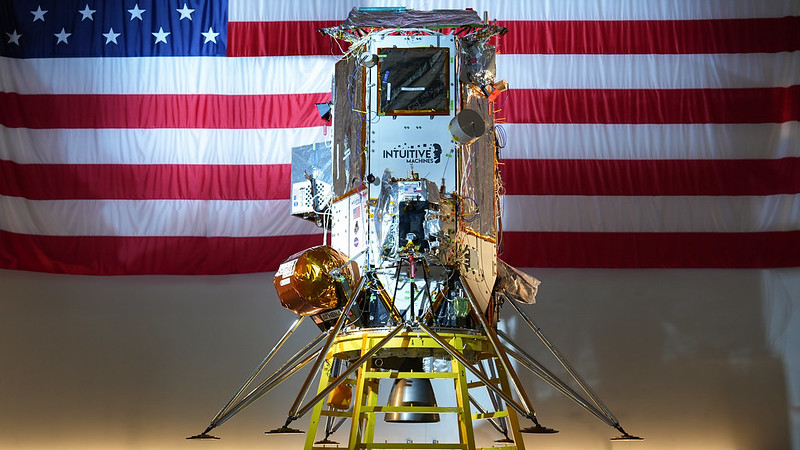A team of astronomers has made a surprising discovery using the U.S. National Science Foundation Green Bank Telescope (NSF GBT): eleven fast-moving clouds of cold, neutral hydrogen gas—akin to “ice cubes”—surviving deep inside the Fermi Bubbles.
Recent News
ALMA Reveals Stunning Details of Infant Galaxies in the Early Universe
The [CII] Resolved ISM in STar-forming galaxies with ALMA (CRISTAL survey) peered back to when the Universe was only about one billion years old – a mere toddler in cosmic terms. These observations are helping scientists understand how galaxies formed and evolved from primordial gas clouds into the organized structures we see today.
NSF NRAO Leads Critical Spectrum Studies to Safeguard Radio Astronomy
The U.S. National Science Foundation National Radio Astronomy Observatory (NSF NRAO) has received funding to expand its study of an invisible—and crucial—scientific and technological resource: the radio spectrum.
Space Company Taps Coast-to-Coast Radio Telescopes for Moon Mission

Intuitive Machines partners with NSF National Radio Astronomy Observatory, using 10 iconic U.S. telescopes from Hawaii to Virgin Islands to guide Nova-C lunar lander’s mission
The U.S. National Science Foundation National Radio Astronomy Observatory (NSF NRAO) is supporting Intuitive Machines’ second lunar mission, IM-2, which landed on the surface of the Moon, Thursday, March 6th.
Intuitive Machines has been working with the NSF NRAO over the past year to utilize the NSF Very Long Baseline Array (NSF VLBA) to support precise tracking and data downlink of Intuitive Machines’ Nova-C lunar lander, named Athena, during its mission to the Moon.
“The NRAO adds significant capability to Intuitive Machines’ Lunar Data Network,” said Intuitive Machines CEO Steve Altemus. “Using multiple, strategically located, world-class radio telescopes and ground stations enables our mission controllers to precisely track Athena through near-continuous, data-driven communications.”
The NSF NRAO will provide Intuitive Machines with access to its NSF VLBA network of radio telescopes, in ten locations across the United States, to receive data transmitted by the Nova-C lander during its journey to the Moon, while in lunar orbit, and after landing. The NSF GBT, the world’s largest fully steerable radio telescope, will also collect data. This mission support will improve the accuracy of the lander’s orbit determination through real-time or near-real-time position data.
“NRAO is excited to support Intuitive Machines in their second groundbreaking lunar mission,” said NSF NRAO assistant director Joe McMullin, who managed this project. “Our telescopes and expertise in radio astronomy will contribute to this mission’s success by providing accurate positional data and reliable communication links. NRAO recognizes the value in supporting commercial partnerships to advance space exploration and scientific discovery.”
About NRAO
The National Radio Astronomy Observatory (NRAO) is a facility of the National Science Foundation, operated under cooperative agreement by Associated Universities, Inc. NRAO designs, builds, and operates cutting-edge radio telescopes for use by scientists around the world.
This news article was originally published on the NRAO website on March 6, 2025.
Recent News
Galactic Mystery: How “Ice Cubes” Survive in the Milky Way’s Blazing Bubbles
A team of astronomers has made a surprising discovery using the U.S. National Science Foundation Green Bank Telescope (NSF GBT): eleven fast-moving clouds of cold, neutral hydrogen gas—akin to “ice cubes”—surviving deep inside the Fermi Bubbles.
ALMA Reveals Stunning Details of Infant Galaxies in the Early Universe
The [CII] Resolved ISM in STar-forming galaxies with ALMA (CRISTAL survey) peered back to when the Universe was only about one billion years old – a mere toddler in cosmic terms. These observations are helping scientists understand how galaxies formed and evolved from primordial gas clouds into the organized structures we see today.
NSF NRAO Leads Critical Spectrum Studies to Safeguard Radio Astronomy
The U.S. National Science Foundation National Radio Astronomy Observatory (NSF NRAO) has received funding to expand its study of an invisible—and crucial—scientific and technological resource: the radio spectrum.
